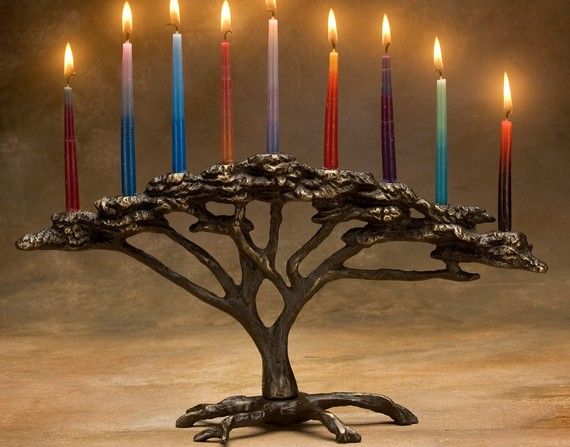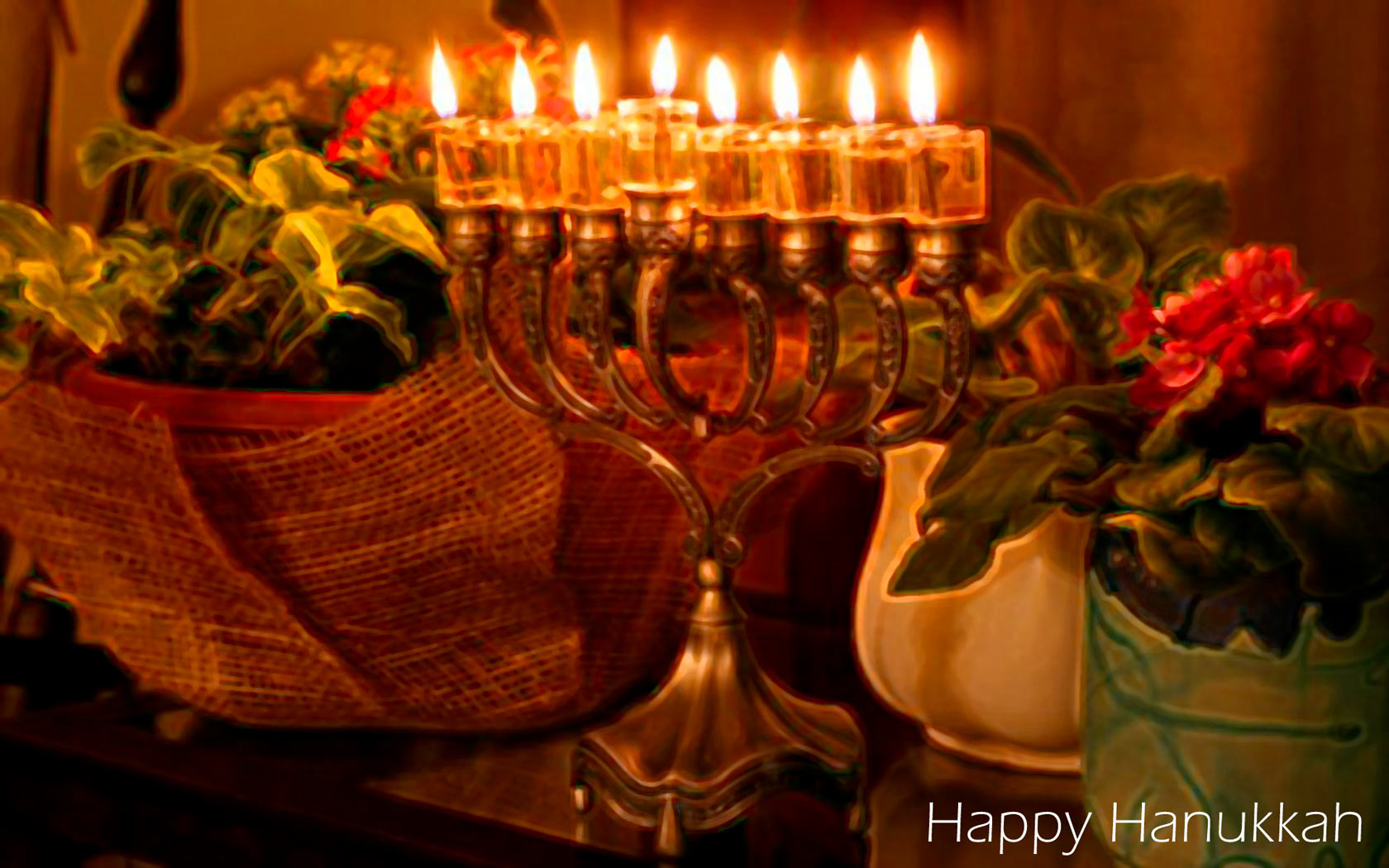by Glenn R. Swift, Jr.
 The Talmud does not have much to say about Hanukkah. In fact, there are but forty lines spread out among a number of different volumes. The passages are cryptic, subjecting them to frequent reinterpretation through the ages. This has continued up to our own age. Regrettably, this has led many to mold the holiday to their own liking and to ignore the magnificence of what is truly a wondrous tradition—one that pays tribute to the undefeatable spirit of the Jewish people.
The Talmud does not have much to say about Hanukkah. In fact, there are but forty lines spread out among a number of different volumes. The passages are cryptic, subjecting them to frequent reinterpretation through the ages. This has continued up to our own age. Regrettably, this has led many to mold the holiday to their own liking and to ignore the magnificence of what is truly a wondrous tradition—one that pays tribute to the undefeatable spirit of the Jewish people.
 Hanukkah comes from the Hebrew word meaning dedication. The history of Hanukkah begins with Alexander the Great (356-323 BCE) who, after conquering Syria, Egypt and Judea, allowed all people to continue to observe their chosen religions. It wasn’t until more than a century and a half later that one of the successors of Alexander the Great, Antiochus IV (216-164 BCE), caused a great upheaval among the Jewish population. Under the reign of Antiochus, the Jewish people were required to worship Greek gods. In 165 BCE, the Jews decided to rebel against this law and formed a crusade against Antiochus.
Hanukkah comes from the Hebrew word meaning dedication. The history of Hanukkah begins with Alexander the Great (356-323 BCE) who, after conquering Syria, Egypt and Judea, allowed all people to continue to observe their chosen religions. It wasn’t until more than a century and a half later that one of the successors of Alexander the Great, Antiochus IV (216-164 BCE), caused a great upheaval among the Jewish population. Under the reign of Antiochus, the Jewish people were required to worship Greek gods. In 165 BCE, the Jews decided to rebel against this law and formed a crusade against Antiochus.
 The commanding general of the Jewish rebel army was the great Judah, known to the world as Judah the Maccabee (or Judas Maccabaeus as he was called in Shakespeare’s Love’s Labor’s Lost). After defeating the Greek army, Judah and his soldiers entered Jerusalem in triumph and ritually cleansed the Temple, which had been left in ruins as a result of desecration carried out by Antiochus’ army. After restoring the Temple to its former glory, the Maccabees re-established traditional Jewish worship there and installed Jonathan Maccabee, a brother of Judas, as High Priest. On the 25th day of Kislev, they dedicated the temple by lighting a restored Menorah.
The commanding general of the Jewish rebel army was the great Judah, known to the world as Judah the Maccabee (or Judas Maccabaeus as he was called in Shakespeare’s Love’s Labor’s Lost). After defeating the Greek army, Judah and his soldiers entered Jerusalem in triumph and ritually cleansed the Temple, which had been left in ruins as a result of desecration carried out by Antiochus’ army. After restoring the Temple to its former glory, the Maccabees re-established traditional Jewish worship there and installed Jonathan Maccabee, a brother of Judas, as High Priest. On the 25th day of Kislev, they dedicated the temple by lighting a restored Menorah.
Although they were only able to find enough oil to keep the Menorah lit for one day, a miracle occurred in which the Menorah stayed lit for eight days. Thus, the Festival of Lights was born to commemorate that day in the temple when the miracle of the Menorah first occurred. Observant Jews celebrate the miracle of the oil by placing eight candles in the Menorah and lighting one candle on each of the eight days of Hanukkah. Although not considered a holy day, Hanukkah is nevertheless celebrated by Jews around the world in observance of the miracle of the oil that occurred in the temple.
 Hanukkah traditionally begins on the 22nd of December and ends on the 31st of December. Research also reveals that there are two types of Menorahs: one is 7-branched and one is 8-branched. There was a prohibition against the use of a 7-branched Menorah similar to the one used in the original temple. The Chanukah (another way of spelling Hanukkah) Menorah has a place for eight candles as well as a ninth candle set apart from the rest. Tradition says that the eight candles commemorate the miracle of the oil while the ninth candle, the Shamash, symbolizes light. The Hanukkah tradition serves to remind all of us that God makes miracles for those who stand up for truth and justice.
Hanukkah traditionally begins on the 22nd of December and ends on the 31st of December. Research also reveals that there are two types of Menorahs: one is 7-branched and one is 8-branched. There was a prohibition against the use of a 7-branched Menorah similar to the one used in the original temple. The Chanukah (another way of spelling Hanukkah) Menorah has a place for eight candles as well as a ninth candle set apart from the rest. Tradition says that the eight candles commemorate the miracle of the oil while the ninth candle, the Shamash, symbolizes light. The Hanukkah tradition serves to remind all of us that God makes miracles for those who stand up for truth and justice.
